Today on November 13, 1940...
...Walt Disney's third full length animated film, Fantasia featuring the Philadelphia Orchestra, debuts in The Broadway Theatre in New York City.
Dim the Lights, Raise the Curtain
Greetings music lovers, and welcome to a musical review of Walt Disney’s Fantasia (1940). The orchestra is tuning their instruments, and the conductor is approaching the podium. Sit back, as the lights dim and we thank you for joining us on a musical journey which spans seven decades and fifteen pieces of music.
(Please click the link to enjoy Rhapsody in Blue while you read this article)
“ Fantasia…(with) music you can see and pictures you can hear,”
Walt Disney’s Fantasia (1940)
Raising the Curtain on a Masterpiece
Walt Disney’s third full-length animated feature film, Fantasia, made its debut on November 13, 1940, in the Broadway Theatre in New York City. Conductor Leopold Stokowski and the Philadelphia Orchestra are featured throughout the film, which is hosted by American music critic, Deems Taylor.
Fantasia (1940) contains eight animated segments set to famous works of classical music, including the Dance of the Sugar Plum Fairy and Night on Bald Mountain. It was rumored Bella Lugosi made several visits to the studio and acted as a live-action double for Chernabog in the Night on Bald Mountain sequence.
Fantasia is notable because it marks the first time Mickey Mouse appears in a full length feature film. Up until this point, Mickey had only appeared in short cartoons and Silly Symphonies.
Fantasia also had notable achievements in sound design and is the first film of its kind to be recorded and presented in stereophonic sound. The film would go on to win a special Oscar for this achievement.
It all started with a mouse…
In the summer of 1937, Walt Disney had a chance meeting with conductor Leopold Stokowski when they were both at Chasen’s restaurant in Hollywood. Walt had recently acquired the rights to a 1897 orchestral piece of music, titled ‘The Sorcerer’s Apprentice’, set to the 1797 poem of the same title. Walt’s original vision was to create an original animated short set to the music featuring his beloved hero, Mickey Mouse.
Disney considered using a well-known conductor to record the music for added prestige. He happened to meet Leopold Stokowski, conductor of the Philadelphia Orchestra, and discussed his plans for the short film. Stokowski, was happy to collaborate on the project, and offered to conduct the piece at no cost.
It was soon realized the production costs of the short film would exceed the expected profit, and the concept of the film evolved into a full length feature, including seven additional segments.
The Concert Feature - a working title
Efforts to turn the Sorcerer’s Apprentice sequence into a feature length film intensified during September 1938. Originally given the working title, The Concert Feature, Fantasia had a talented team of individuals collaborating on the project.
Production of the film was spearheaded by film producer Walt Disney, renowned conductor Leopold Stokowski, musicologist Deems Taylor, and co-story directors Joe Grant and Dick Huemer.
Walt Disney
As with all of his films, Walt Disney was heavily involved in the creation and collaboration of the film. Walt had a gift for bringing talented artists together, and he is credited with bringing Leopold Stokowksi, the Philadelphia Orchestra and Deems Taylor together to collaborate on this project.
Walt is also said to be the inspiration and model behind the Sorcerer Yen Sid, in the Sorcerer’s Apprentice segment of the film. Yen Sid is Disney spelled backwards, and the Sorcerer shares some of Walt’s physicality observed as he walked through the studio.
Leopold Stokowski
Simply known to the public as Stokowksi, Leopold Stokowksi was heavily involved in the development of the film, and appeared as the conductor who shakes Mickey’s hand. He was a cornerstone of his generation in the world of classical music, and was considered a household name. At the time of filming, Stokowksi was the resident conductor with the Philadelphia Orchestra, and was responsible for bringing them into the project.
Deems Taylor
Deems Taylor was an American composer, a promoter of classical music and a music critic. He was referred to as the American Dean of Music by friends and colleagues for his wealth of knowledge, and taste.
Deems is featured as the narrator in Fantasia.
In Stereo-”Fantasound”
Always an innovator, Walt Disney was also in favor of groundbreaking sound recording for his experimental epic, as he desired to raise the live sound sensations of a concert hall to even greater heights.
The musical recording for Fantasia was recorded in the acoustically perfect Academy of Music, home of Stokowski and the Philadelphia Orchestra. Huge trucks hauled tons of recording equipment to Philadelphia, where nine separate optical tracks were recorded, isolating various sections of the orchestra. This was mixed down to three main tracks with a special additional notched track (known as the TOGAD or tone-operated gain-adjusting device track), used to trigger relays for transferring the music to the many Fantasound speakers throughout the theater.
“The music comes not simply from the screen, but from everywhere; it is as if a hearer were in the midst of the music. As the music sweeps to a climax, it froths over the proscenium arch, boils into the rear of the theatre, all but prances up and down the aisles.”
Time Magazine, November 18, 1940
Walt Disney’s Fantasia
On the Program
Several classical pieces of music were suggested and storyboarded to the film. Ultimately, eight segments were selected and animated, to be included in the final film. They are as follows:
Toccata and Fugue in D Minor: featuring drawings influenced by the patterns and color inspired by the music.
The Nutcracker Suite: featuring Hop Low the dancing mushroom, and loosely inspired by the antics of the Three Stooges.
The Sorcerer’s Apprentice: features the Sorcerer, Yen Sid, and his apprentice, Mickey Mouse.
Rite of Spring: features a prehistoric segment with dinosaurs. A scene featuring a T-Rex and a Stegosaurus was recreated with audio-animatronic dinosaurs for the 1964 World’s Fair exhibit, The Magic Skyway. The scene featuring audio-animatronic dinosaurs would later appear in the EPCOT Center (1982-1993) attraction, The Universe of Energy.
Pastoral Symphony: a Greek pastoral segment featuring centaurs and Baccaus. The female centaurs originally didn’t meet the Motion Picture Hays Code of Ethics, and additional flowers were added for modesty.
Dance of the Hours: A ballet featuring dancing ostriches, hippos and alligators.
Night on Bald Mountain: the story closely follows original story found in the poem. Bela Lugosi, served as a live action reference for Chernabog, demon of the night. Lugosi was later replaced by sequence, director Wilfred “Jaxon” Jackson due to creative differences.
Ave Maria: As the final musical piece, the film's program reads that Ave Maria provides "an emotional relief to audiences tense from the shock" of Night on Bald Mountain.
Theater Brochures
Theater goers attending the 1940-42 ‘road show’ version of Fantasia received a theater program, much like they would have if they were going to a formal concert in a hall. The opening credits of Fantasia only featured a single title card, so the audience could refer to the program for a listing the the songs featured in the film, and the names of the artists.
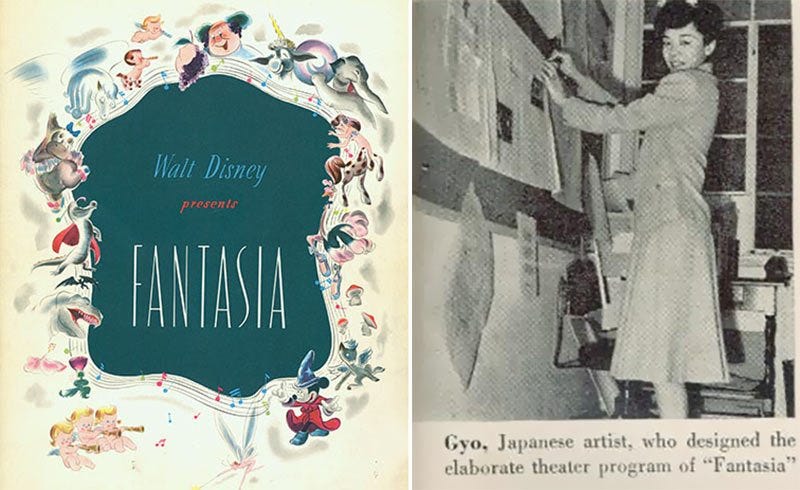
The Smithsonian National Museum of American History has one of the original Fantasia (1940) theatrical brochures featured in their online catalog.
The Cutting Room Floor
Debussy's Clair de Lune was developed as part of the film's original program. After being completely animated, it was cut out of the final film to shorten its lengthy running time. The animation depicted two Great white herons flying through the Florida Everglades on a moonlit night. The sequence was later edited and re-scored for the Blue Bayou segment in Make Mine Music (1946). In 1992, Clair de Lune was restored, complete with the original soundtrack of Stokowski with the Philadelphia Orchestra. It was included as a bonus feature in The Fantasia Anthology DVD in 2000.
Destino, a collaboration between Walt Disney and surrealist artist Salvador Dalí, was also considered for inclusion as a future Fantasia segment, but was shelved until it was re-discovered during production of Fantasia 2000.
The Theatrical Release and Los Angeles Premiere
Theatrical Release in New York
Fantasia (1940) had its theatrical debut at the Broadway Theatre in New York City on November 13, 1940. This was the same theater where 12 years prior, Mickey Mouse had made his theatrical debut in Steamboat Willie on November 18, 1928. The premiere of Fantasia was a full-circle moment for Walt Disney. Walt describes the debuts of Sreamboat Willie and Fantasia as both ground breaking, and transforming.
In 1940, Fantasia was first released as a theatrical roadshow and played exclusively at 13 select theaters. One of the most notable to Disney historians is the prestigious Carthay Circle Theatre in Los Angeles.
The LA Premiere
The West Coast premiere at the Carthay Circle Theatre was a grand affair, attracting some 5,000 people, including Shirley Temple, Cecil B. DeMille, Forrest Tucker, James Cagney, Robert Montgomery, and many other notables in the film industry.
The Carthay Circle was the site of some of Hollywood’s most glittering premieres, including Snow White and the Seven Dwarfs on December 21, 1937. Two replicas of the Carthay Circle can be found in Disney Parks. The first being on Sunset Blvd, in Disney’s Hollywood Studios, and the second in Disney California Adventure, where the Carthay Circle Restaurant stand’s as the park’s icon, much like Cinderella Castle is the icon of the Magic Kingdom.
Fantasia garnered significant critical acclaim at the time of release and was seen by some critics as a masterpiece. Among those at the film's premiere was film critic Edwin Schallert of the Los Angeles Times, who considered the film to be a magnificent achievement, noting the rapturous applause the film received by the audience during the various interludes.
The 1942 Academy Awards
After the film’s November 1940 release, Walt Disney had hoped Fantasia would be nominated for Best Picture at the 1941 Academy Awards, however the film wasn’t eligible because it missed its mandatory Los Angeles release dates.
The following year, the Academy of Motion Pictures decided to award Walt, Stokowski and the team behind Fantasia special Academy Awards for their outstanding achievements.
Special Awards
To Walt Disney, William Garity, John N. A. Hawkins and the RCA Manufacturing Company for their outstanding contribution to the advancement of the use of sound in motion pictures through the production of Fantasia.
To Leopold Stokowski and his associates for their unique achievement in the creation of a new form of visualized music in Walt Disney's production, Fantasia, thereby widening the scope of the motion picture as entertainment and as an art form.
Irving G. Thalberg Memorial Award
Walt became the fourth producer ever to receive the Irving G. Thalberg Award. Famed film producer David O. Selznick presented the award, and praised the groundbreaking Disney feature, saying “…music was used as the complete basis for the creation of the picture (which) contributed to the musical education of the public.”
Hidden character names
Due to the lack of dialogue, most of the Fantasia characters aren’t referenced by name in the film. Some of the more popular characters are as follows:
Mlle. Upanova, the ostrich ballerina and her co-stars Hyacinth Hippo and Ben Ali Gator.
Hop Low, the little mushroom featured in the Dance of the Sugar Plum Fairy.
Peter Pegasus, the black baby flying horse
Chernabog, from Night on Bald Mountain
Yen Sid, the sorcerer.
Hidden Mickeys
A hidden mickey can be seen in a cluster of bubbles during the Sorcerer’s Apprentice segment of the film, when Mickey is doused with water. Hidden mickeys are a subtle representations of Mickey found in Disney films, attractions, architecture and other works of art. The hidden mickey in Fantasia is one of the first to appear in a Disney film.
World War II
On December 8, 1941, the day the United States entered World War II, focus at the Walt Disney Studios shifted from producing and marketing costly full-length animated features, to shorter features and government contracted war time films.
Due to World War II, distribution of Fantasia was halted, and the film wasn’t released overseas. It took some time for the film to recoup its production costs. Fantasia began to make a profit from its $2.28 million budget after its return to theaters on December 17, 1969.
1969: A Psychedelic Re-Release
Since 1942, the film has been reissued multiple times by RKO Radio Pictures and Buena Vista Distribution. In the 1960s, Fantasia was released in segments to schools for educational purposes.
Catering to a younger generation, who were intrigued with new-aged films, such as the Beatles’ Yellow Submarine, Disney and RKO re-released Fantasia in 1969. The film was promoted with a psychedelic-styled advertising campaign. University students rediscovered the film, finding the animated film’s colorful imagery mind-blowing, and reportedly appreciated it as a psychedelic experience.
Curtain Call…
In many ways, Fantasia is a film which was both of its time and ahead of its time. It continues to resonate with audiences, and continues to capture the attention of new generations of fans. Much like Walt Disney’s parks, Walt had commented Fantasia was meant to be an ongoing project which would be consistently updated.
Fantasia continues to appear in the Disney Parks, and in film. Here is a list of films, and attractions inspired by Fantasia (1940):
Fantasia 2000 - the film features Steve Martin as the introductory host (Deems Taylor’s role) and the Chicago Symphony Orchestra. The film features the original Sorcerer’s Apprentice Segment, and seven new segments, each introduced by a celebrity host.
Mickey’s PhilharMagic - this attraction is found in five Disney theme parks across the globe. In this attraction, Mickey steps into the role of maestro previously occupied by Stokowski and it is Donald Duck who steals the sorcerer’s hat.
The Fantasia Garden’s Fairway and Miniature Golf - located at the Walt Disney World Resort in Bay Lake, Florida.
The Sorcerer’s Hat - at Disney’s Hollywood Studios, this park icon was retired in 2015.
The Sorcerer’s Apprentice (2010) film - starring Nicholas Cage and Jay Baruchel.
The Great Movie Ride - at Disney’s Hollywood Studios, this retired Disney attraction featured a scene from the Sorcerer’s Apprentice.
On October 25, 2019, it was announced that Disney is developing a project based on Fantasia for its streaming service, Disney+.
Thank you for spending time with us and reading this article. We are in the process of expanding our community and we appreciate your readership.
If you haven’t taken the opportunity to do so, hit the subscribe button below to receive magic in your inbox. Subscriptions are free, and you can follow us on Twitter at @Beautiful_Tmrw.
Here is the link to our homepage on Substack, so you can enjoy all of our previous content.
Stay optimistic, and see you real soon!
Sincerely,
Harper




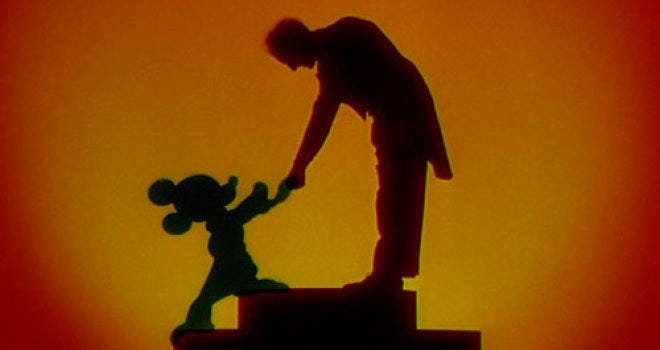
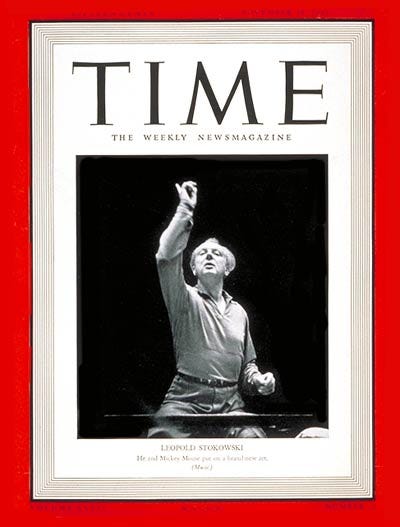
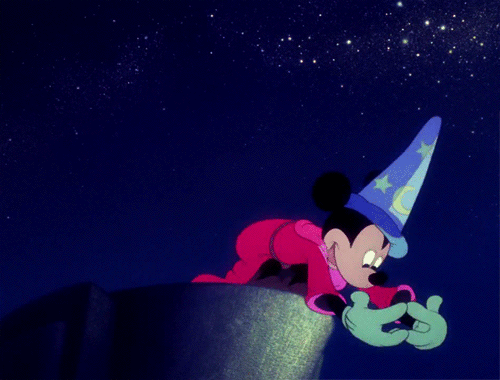
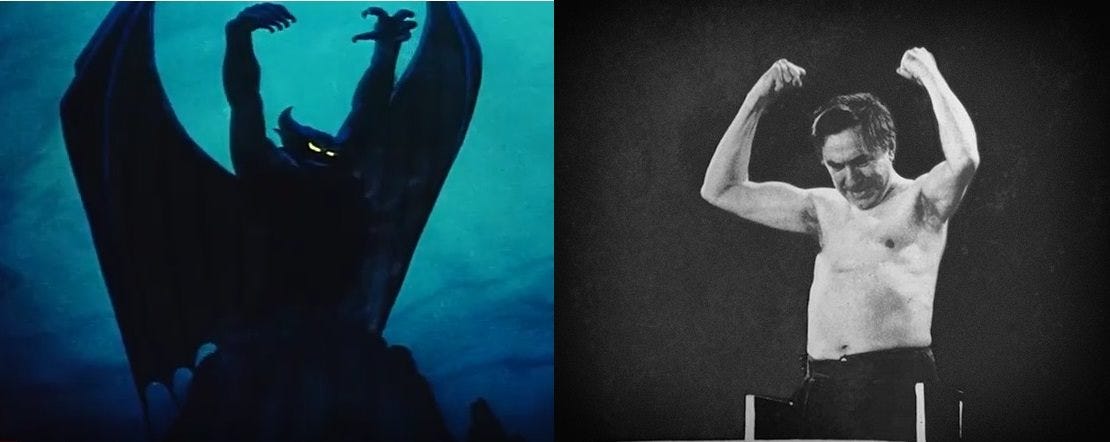
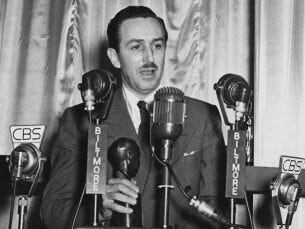
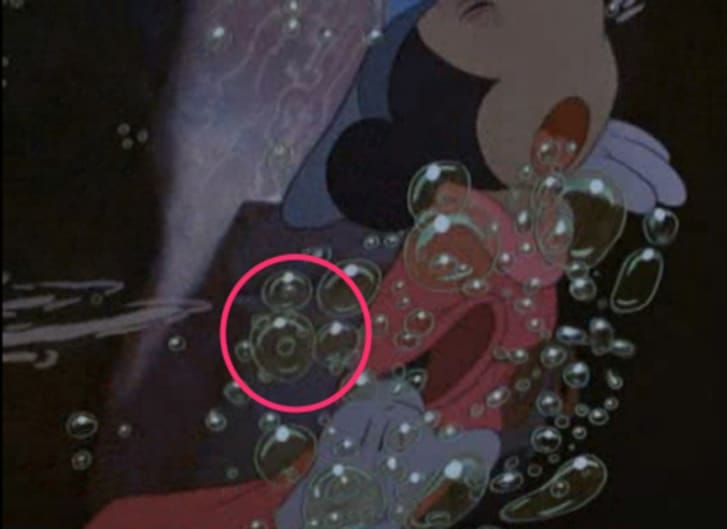
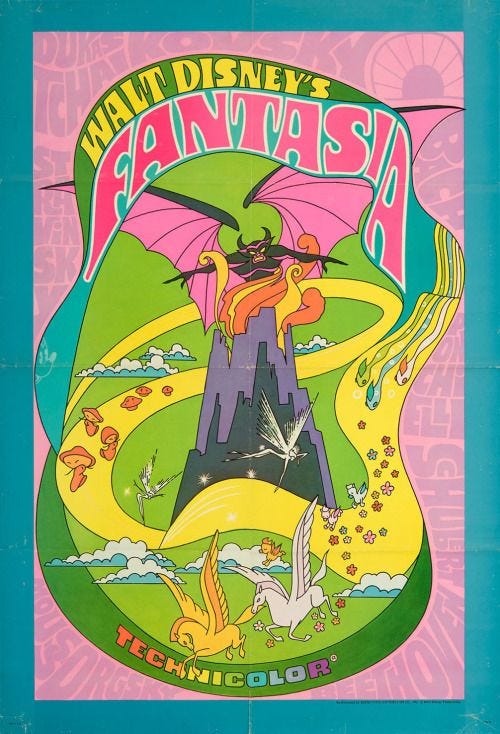
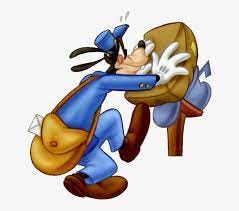
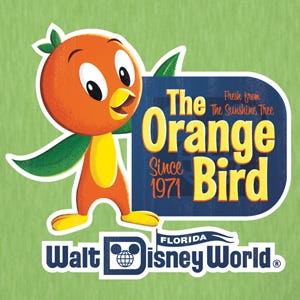
One of my all-time favorite films.